This article was medically reviewed by Luba Lee, FNP-BC, MS. Luba Lee, FNP-BC is a Board-Certified Family Nurse Practitioner (FNP) and educator in Tennessee with over a decade of clinical experience. Luba has certifications in Pediatric Advanced Life Support (PALS), Emergency Medicine, Advanced Cardiac Life Support (ACLS), Team Building, and Critical Care Nursing. She received her Master of Science in Nursing (MSN) from the University of Tennessee in 2006.
There are 14 references cited in this article, which can be found at the bottom of the page.
This article has been viewed 24,179 times.
Nearsightedness, or myopia, occurs when you can see close to you, usually within a few meters, but not farther away from you. You can be born with nearsightedness or develop it over time, often during childhood. The exact cause of nearsightedness is unknown, but common risk factors include having one or two nearsighted parents, and regularly engaging in activities that strain the eyes (such as spending a lot of time reading or looking at a computer screen).[1] There is no guaranteed way to prevent nearsightedness, but you can make adjustments to your lifestyle and your diet to help maintain your eyesight, and do exercises to reduce stress on your eyes and boost your visual acuity. You can also speak to an optometrist about the issue for professional guidance and advice.
Steps
Adjusting Your Lifestyle and Diet
-
1Avoid reading in low light. Reading in low light can force you to strain your eyes, which can lead to eye issues like nearsightedness. Make sure you only read books, magazines, and other printed items in bright, well-lit areas.[2]
- If you are reading content on your cellphone, make sure the screen is bright so you do not have to strain your eyes.
-
2Break up the time you spend looking at screens. Staring at computer and television screens all day can put wear on your eyesight. It can contribute to eye issues like nearsightedness. Try to schedule breaks in the day where you do not stare at a computer or a television.[3]
- For example, if you work all day on a computer, schedule 5 to 10 minute breaks every hour where you go outside for a short walk or chat with a friend so you are not looking at screens.
- Some studies have shown that spending more time outdoors can help to maintain your eyesight and may also help to prevent nearsightedness. Use scheduled breaks in your day to go outside for a walk or short run.
Advertisement -
3Get prescription eyeglasses early. If you think you may need to get your eyes checked due to an issue with your eyesight, do it early. Getting prescription eyeglasses early, such as during childhood, can help to maintain your eyesight and ensure it does not get worse. It can also help to prevent you from developing nearsightedness, if you do not already have it.[4]
- If you already have prescription eyeglasses, make sure you wear them when advised by your optometrist. This can help to prevent your eyes from getting worse.
-
4Wear sunglasses when you go outside. Protect your eyesight by always putting on polarized sunglasses with UVB protection when you go outside, especially on a sunny day. This can help to prevent eye issues, such as nearsightedness.[5]
-
5
-
6Maintain a healthy diet. Make sure you eat a lot of fruits and vegetables in your diet. Have healthy protein sources that are high in omega-3 fatty acids, such as tuna and salmon. Maintaining a healthy diet rich in omega-3 fatty acids can improve your eye health.[7]
-
7Take steps to prevent diabetes. There may be a link between nearsightedness and diabetes.[8] Lower your risk of developing diabetes by exercising regularly and cutting back on sugar and processed carbohydrates. If you are already diabetic, take care to maintain good blood sugar levels.
Exercising Your Eyes
-
1Do focus exercises to relax and strengthen your eye muscles. If your eyes are starting to feel strained and tired from doing close-up work, reading, or looking at a screen, take occasional breaks to focus on distant objects and give your eyes a gentle workout. This will not only give your eyes a rest, but it will also help strengthen and loosen your tense eye muscles.[9] For example, try the following exercise:[10]
- Hold your thumb straight out in front of you at arm’s length. Slowly bring it in until it is touching the tip of your nose, focusing on it with your eyes the whole time.
- Move your thumb away from your nose again, but this time extend your arm out horizontally to the right, still following the movement with your eyes.
- Return your thumb to your nose and then repeat a few times, each time extending your arm in a different direction (forward, up, down, left, right).
- You may wish to spend about 3 minutes on this exercise, repeating the routine 3 to 5 times a day.
-
2Try eye yoga. Eye yoga exercises are designed to relieve eye stress from close-up work. They can also improve blood circulation to the area around the eyes, and help keep your eyes from getting too dried out.[11] Try a few basic eye yoga exercises every day:[12]
- Eye stretches: Holding your head still and moving only your eyes, first look up as far as you can. Hold for two seconds, then look down as far as you can. Repeat this process, looking left, right, and diagonally in each direction (up and left, down and left, etc.).
- Eye flexes: Relax your eyes and look up. Slowly rotate your eyes in a clockwise direction. Keep this going for 1 minute, and then repeat, this time rolling your eyes counter-clockwise.
- Focus switching: Switch between focusing on an object close up (like text at reading distance), and focusing on something far away (like large text on a sign at least 20 feet away from you). Cover 1 eye, and spend a few second tracing the shape of the near object with your uncovered eye. Then switch to the far object. Cover your other eye, and repeat.
-
3Do some brain-training exercises. These exercises do not actually affect your eyes, but they boost your vision by training your brain to interpret visual signals more effectively.[13] Try a brain-training game like UltimEyes, which has been shown to dramatically increase visual acuity when used over a period of time.
- Be aware that brain training exercises may make your eyes feel tired at first. However, after a few sessions, you should start to adjust, and these symptoms will diminish.
Speaking to an Optometrist
-
1Get your eyesight tested. One way to possibly prevent nearsightedness is to have your eyes tested for any issues. If you haven’t had your eyes tested in a long time, schedule an appointment. If you notice anything off about your eyesight, get tested by your optometrist.
- You can also use the appointment as an opportunity to talk about any concerns about your eyesight you may be having with the optometrist.
-
2Discuss reading glasses and contacts with the optometrist. In some cases, getting reading glasses or contacts with a low prescription can help to reduce your chances of developing nearsightedness. Speak to your optometrist about reading glasses or contacts as one way of preventing nearsightedness.[14]
- The effectiveness of reading glasses or low prescription contacts for preventing nearsightedness is still up for debate. Some optometrists argue that this option will not improve your eyesight or reduce your chances of becoming nearsighted.
-
3Have regular check ups with the optometrist. If you already have eyeglasses or contacts, going for regular check ups will ensure your eyesight does not get worse.
- Try to have regular check ups with the optometrist every six to eight months to maintain your eyesight.[15]
References
- ↑ https://www.aoa.org/patients-and-public/eye-and-vision-problems/glossary-of-eye-and-vision-conditions/myopia?sso=y
- ↑ http://www.health.harvard.edu/healthbeat/safeguarding-your-sight
- ↑ https://www.aao.org/newsroom/news-releases/detail/is-too-much-screen-time-harming-childrens-visio
- ↑ https://www.aoa.org/healthy-eyes/eye-and-vision-conditions/myopia?sso=y
- ↑ http://www.mayoclinic.org/diseases-conditions/nearsightedness/basics/lifestyle-home-remedies/con-20027548
- ↑ https://health.clevelandclinic.org/the-5-most-common-vision-problems-and-how-to-prevent-them/
- ↑ https://www.health.ny.gov/publications/0911/
- ↑ https://my.clevelandclinic.org/health/diseases/8579-myopia-nearsightedness
- ↑ https://www.health.harvard.edu/diseases-and-conditions/the-lowdown-on-eye-exercises
- ↑ https://ors.od.nih.gov/sr/dohs/HealthAndWellness/Ergonomics/Pages/exercises.aspx
- ↑ https://pubmed.ncbi.nlm.nih.gov/27390422/
- ↑ https://www.youtube.com/watch?v=J7KVbo1ABcc
- ↑ https://www.apa.org/monitor/2021/01/lab-work-games
- ↑ https://my.clevelandclinic.org/health/diseases/8579-myopia-nearsightedness
- ↑ https://www.ncbi.nlm.nih.gov/pmc/articles/PMC1860154/

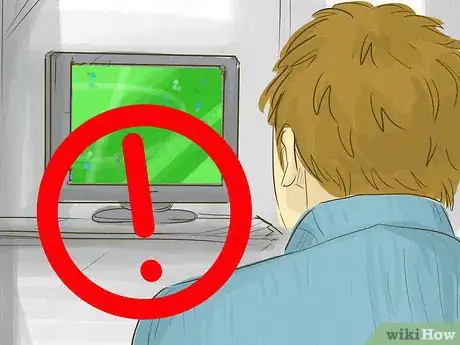
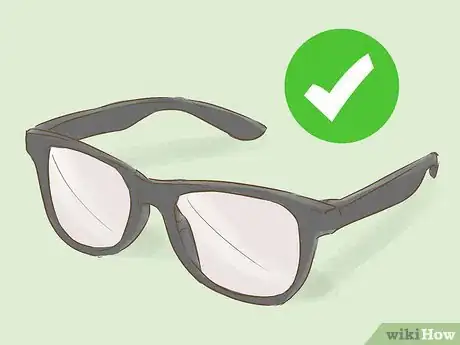



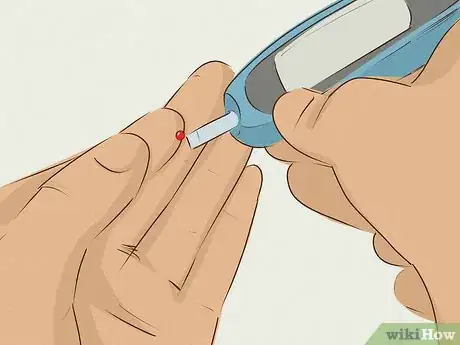
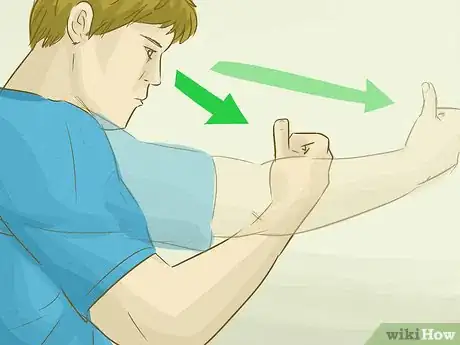


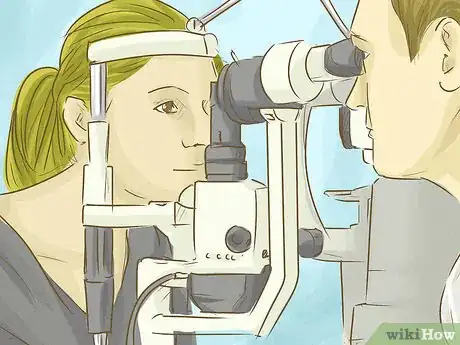
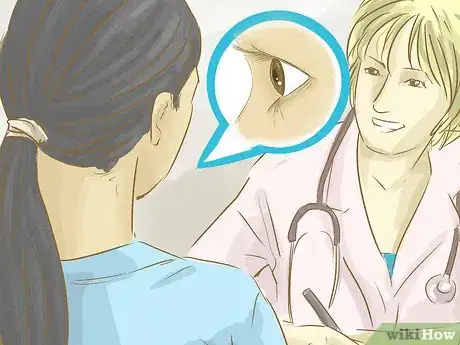

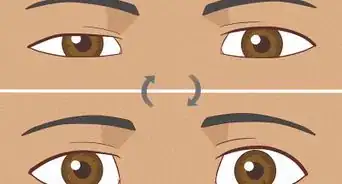
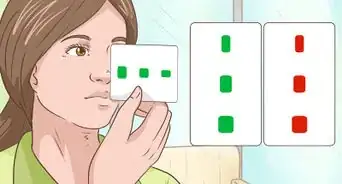
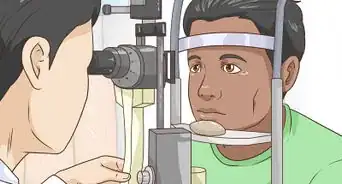


















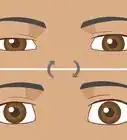

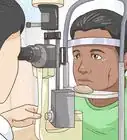




































Medical Disclaimer
The content of this article is not intended to be a substitute for professional medical advice, examination, diagnosis, or treatment. You should always contact your doctor or other qualified healthcare professional before starting, changing, or stopping any kind of health treatment.
Read More...